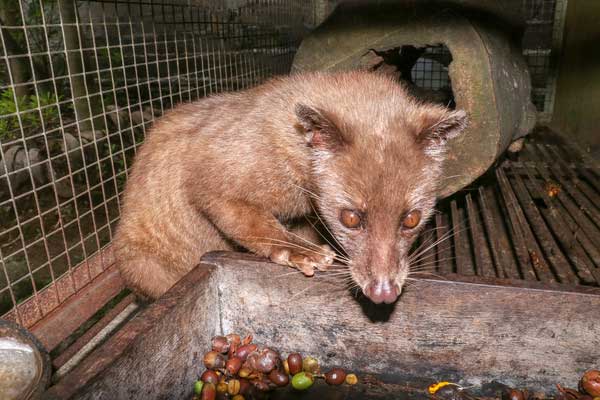Coffee enthusiasts around the world are often captivated by the idea of the best and most expensive coffee beans. However, the coffee industry is full of misconceptions and misunderstood concepts. In this article, we will delve into the topic, starting with the infamous Kopi Luwak and its reputation. We’ll explore the reality behind coffee quality and processing, examine high-end coffee auctions, and shed light on the allure of Geisha coffee. By the end, you’ll have a deeper understanding of what truly makes a coffee exceptional and valuable.

Kopi Luwak: Overrated or Exceptional?
When it comes to discussing the best and most expensive coffee beans, many people think of Kopi Luwak, also known as cat poop coffee. This coffee variety has garnered significant attention due to its unique production process involving the Asian palm civet. However, does the digestion process of the civet truly enhance the coffee’s flavor and justify its high price? Let’s separate fact from fiction and uncover the truth behind this intriguing coffee.
Kopi Luwak is derived from the Indonesian words “kopi” meaning coffee and “luwak” referring to the animal itself. The concept behind Kopi Luwak is that wild luwak animals inhabit coffee farms and consume coffee cherries. Workers, who were not allowed to taste the export-quality beans, started roasting the digested and leftover beans, giving rise to the reputation of this unique coffee.
However, it’s essential to consider the overall coffee quality during the time when Kopi Luwak gained prominence. Coffee standards and practices have significantly evolved over the past century. Thus, it’s reasonable to assume that the bar for quality coffee was set much lower back then. The popularity of Kopi Luwak soared after the 2007 movie “The Bucket List,” but it’s important to distinguish between the world of movies and the reality of coffee production.
The Art of Coffee Processing: Separating Fact from Fiction
To truly understand what makes a coffee exceptional, we must delve into the coffee production process. Coffee undergoes several stages, from growing ripe and sweet cherries under ideal conditions to processing those cherries to transform them into coffee beans. While processing is a vital step, it cannot magically turn an inferior product into a superior one.
When it comes to Kopi Luwak, the civets play a role in processing the coffee cherries. They strip the fruit skin of the cherries, preparing them for further processing. However, it’s crucial to note that the quality of the beans consumed by the civets directly impacts the quality of the coffee produced. If the civets are fed low-quality beans, the resulting coffee will also be of lower quality. This realization challenges the notion that the digestion process improves the flavor.
Some argue that wild civets produce the best Kopi Luwak because they have a more varied diet, selecting only the ripest cherries. However, the industry has seen the rise of unethical practices involving captive civets and force-feeding them with low-quality beans. This exploitation undermines the integrity and potential quality of Kopi Luwak.

Unveiling the Secrets of High-End Coffee Auctions
The coffee industry showcases its finest offerings through high-end coffee auctions. One such prestigious event is the Best of Panama auction, where specialty coffees, particularly those in the geisha category, fetch astounding prices. These auctions provide a platform for growers to present their best coffees to discerning buyers who recognize and appreciate exceptional quality.
The geisha coffee variety, originally from Ethiopia, gained prominence in Panama’s Boquete region due to its remarkable flavor profile. It is known for its vibrant acidity, floral aromas, and complex flavors. The scarcity and demand for geisha coffee have contributed to its high prices at auctions.
However, it’s crucial to recognize that not all geisha coffees are created equal. Factors such as growing conditions, processing methods, and post-harvest care greatly influence the quality and flavor of the final product. Additionally, the integrity and transparency of the supply chain play a significant role in ensuring that the coffee reaches consumers with its inherent quality preserved.
Geisha Coffee: A Tale of Luxury and Flavor
Geisha coffee, with its unique taste profile, has become synonymous with luxury and sophistication in the coffee world. Its delicate floral and tea-like characteristics, combined with its rarity, have contributed to its premium status. However, the focus on geisha coffee should not overshadow the vast array of outstanding coffee varieties available worldwide.
The perception that geisha coffee is the pinnacle of quality has led to skyrocketing prices, with some lots selling for hundreds or even thousands of dollars per pound. These high prices often lead to exclusivity and limited accessibility for most coffee enthusiasts. While geisha coffee offers a distinct and memorable experience, it’s essential to explore other varieties and support sustainable practices within the coffee industry.
Conclusion
While there are coffees that hold the title of being the best and most expensive in the world, it’s crucial to question whether they truly deliver exceptional value. Price alone does not guarantee outstanding quality, as several factors contribute to a coffee’s flavor and overall experience. By understanding the intricacies of coffee production, processing, auctions, and unique varieties like geisha, you’ll be equipped with the knowledge to navigate the world of coffee with confidence.
As you explore the world of coffee, remember to consider the ethics and sustainability of the industry. Look beyond price tags and seek out coffees that provide a balance of exceptional quality and fair practices throughout the supply chain. Embrace the diversity of coffee flavors and experiences, allowing yourself to discover hidden gems that might not come with exorbitant price tags. Cheers to your continued coffee exploration!
